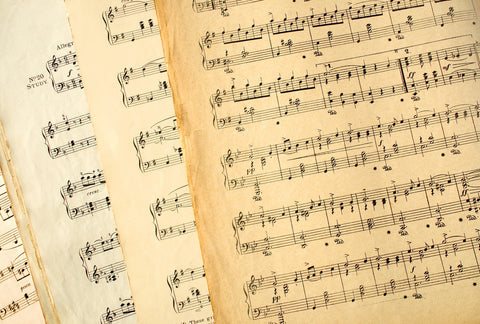
Edexcel A2 revision notes: Bach, Brahms and Schoenberg
£9.95
J.S. Bach: Cantata No. 48, movements I-IV
Background
- Johann Sebastian Bach (1685-1750) probably composed about 300 church cantatas in all, many in the 1720s for use at St Thomas’s (Lutheran) church, Leipzig
- Cantata No. 48 was composed in 1723. There are seven movements in all
- It was composed for the 19th Sunday after Trinity. The Gospel reading on that day, Matthew 9:1-8, concerns one of Jesus’s miraculous healings, and the forgiveness of sins, a theme underlying the cantata’s libretto
- The text of movement I is Romans 7:24. The texts of movements II and IV are anonymous. Movement III sets verse 4 from the hymn ‘Ach Gott und Herr’ by Rutilius, and uses the associated chorale melody
Brahms: Piano Quintet in F minor, Op. 34,
movement III
Background
- This piece by Johannes Brahms (1833-1897), in four movements, was completed in 1864, and first performed (privately) in Leipzig in 1866. It is one of Brahms’s most important pieces of chamber music. There is a version for two pianos (Op. 34b)
- Brahms was influenced by the only major piano quintet previously composed – Schumann’s Op. 44 in Eb (1842)
- He wrote originally for string quintet (two violins, viola and two cellos – compare Schubert’s String Quintet in C, D.956). This version was destroyed
- Movement III is in C minor, the dominant minor of F minor
- It is a scherzo, as the third movement of a four-movement work often is
- A scherzo is a type of fast movement developed, principally by Beethoven, from the Classical minuet. It usually retains the same overall ternary structure, with a contrasting middle section (known as ‘trio’, however many instruments are involved). Most scherzos are in simple triple (3 4) metre – but ours alternates between compound and simple duple metres (6 8 and 24)
Schoenberg: ‘Der kranke Mond’ from
Pierrot Lunaire
Background
- Der kranke Mond (‘The sick moon’) is song no. 7 from Pierrot Lunaire (Opus 21, 1912) by Arnold Schoenberg (1874-1951)
- Schoenberg’s title for the whole work was Dreimal Sieben Gedichte aus Albert Girauds Pierrot Lunaire – ‘Three times seven [21] poems from Albert Giraud’s Pierrot Lunaire’
- Giraud, a Belgian, wrote in French; Schoenberg used the German translation by Hartleben
- Giraud was a symbolist (symbolism was an offshoot of Romanticism); in poetry, intense and persistent use of metaphor and symbol was preferred to simple direct statement
- Giraud’s Pierrot Lunaire (altogether 50 poems) dates from 1884. Pierrot (‘little Peter’) was a figure from the commedia dell’arte, a form of theatre of 16th-century Italian origin. Giraud’s title may be translated as ‘moonstruck Pierrot’
- Giraud’s subtitle was ‘Rondels bergamasques’. ‘Rondel’ or rondeau was a type of French poem of medieval origin. ‘Bergamasque’ referred originally to peasant dances from northern Italy (Bergamo). There are links with the commedia dell’arte




